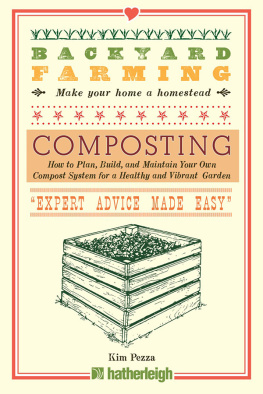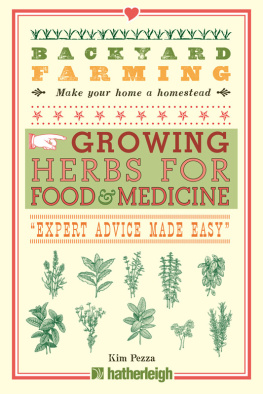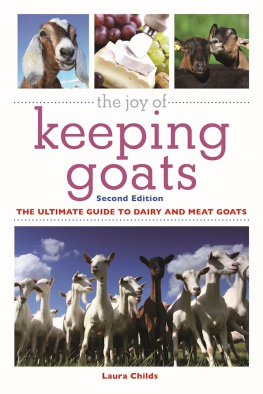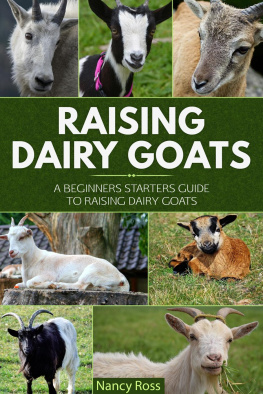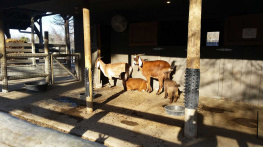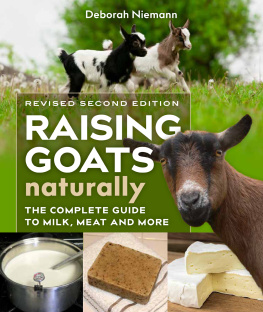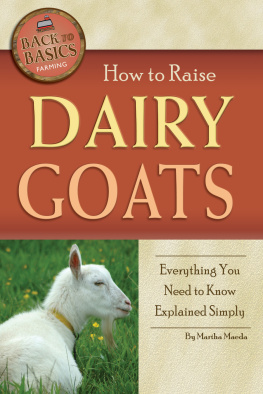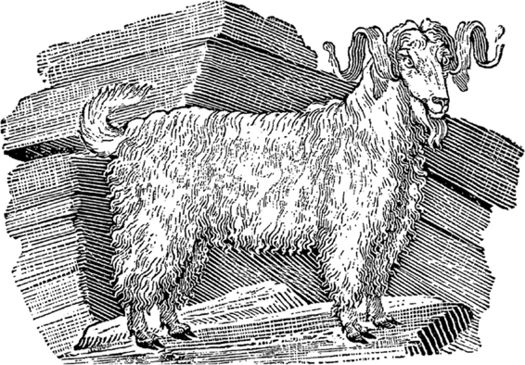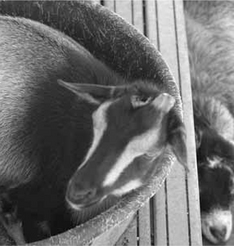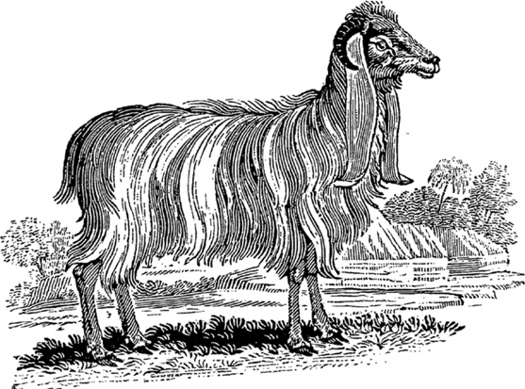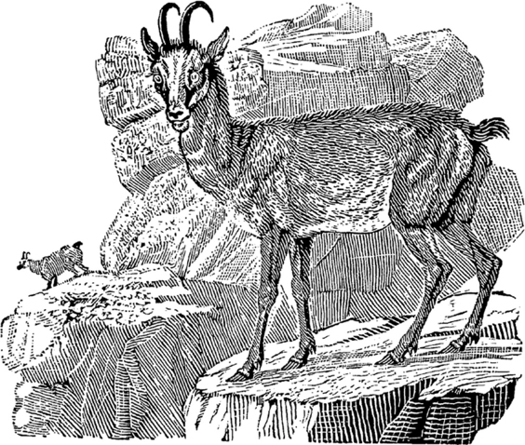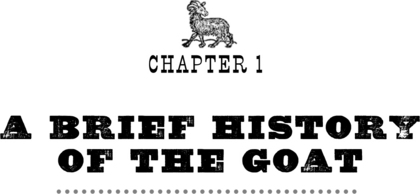
Hatherleigh Press is committed to preserving and protecting the natural resources of the earth. Environmentally responsible and sustainable practices are embraced within the companys mission statement.
Visit us at www.hatherleighpress.com and register online for free offers, discounts, special events, and more.
Backyard Farming: Raising Goats
Text copyright 2013 Hatherleigh Press
Library of Congress Cataloging-in-Publication Data is available upon request.
ISBN: 978-1-57826-473-5
eBook ISBN: 978-1-57826-474-2
All rights reserved. No part of this book may be reproduced, stored in a retrieval system, or transmitted, in any form or by any means, electronic or otherwise, without written permission from the publisher.
Cover Design by Carolyn Kasper
Interior Design by Nick Macagnone
v3.1
Some of the most fun youll have as a new homesteader or backyard farmer is your time spent with goats. In short order youll see that there is a reason why these magical animals are known as the clowns of the barnyard. In fact, Ive had a few that exhibited shades of Houdini as well. It is all part of the fun and frustration of owning goats.
Goats like to sleep in the strangest places
Goats are available in a number of colors, sizes, varieties, and (as you will find out) personalities. They can be used as dairy, meat, working, or pet animals. They can even be used as lawnmowers in places where mowing may be difficult (although weed killers cannot be used for areas where the goats crop and graze).
Goats are a great addition to the farm, especially if you want milk or meat but dont have the space for cattle or the ability or patience to deal with large animals. They are even beginning to make an appearance on urban and city farms. Best of all, goats are animals that the entire family can safely handle and work with.
So start reading and start planning; that new goat is closer than you think.
Kim Pezza grew up among orchards and dairy and beef farms having lived most of her life in the Finger Lakes region of New York state. She has raised pigs, poultry and game birds, rabbits and goats, and is experienced in growing herbs and vegetables. In her spare time, Kim also teaches workshops in a variety of areas, from art and simple computers for seniors, to making herb butter, oils, and vinegars. She continues to learn new techniques and skills and is currently looking to turn her grandparents 1800s farm into a small, working homestead.
T he goat is one of the earliest, if not the earliest, example of an animal to be domesticated by humans. The word goat actually stems from the old English gat, meaning she-goat, whereas the word for male goat was bucca, which we know today as buck. By the eighteenth century, females would also come to be known as nannies or nanny goats, while males would become known as billys in the nineteenth century.
A member of the Bovidae family, the goat was domesticated in the Zagros Mountains of Iran. While our modern goat breeds are subspecies of the wild goats found in southwest Asia and eastern Europe, it is thought that the wild bezoar (wild Iranian goat) is the origin of all domestic goats.
Remains of goats have been found that date back as far as 10,000 years at sites including Jericho in Palestine and Djeitun in what is now Afghanistan. They seem to have been usually kept in herds under the watchful eye of children or teens, referred to as shepherds.
For better or worse (from the goats point of view), goats played a role in a number of histories, mythologies, and other belief systems. The Greek satyr Pan was half man and half goat, with the head and torso of a man, and the ears, horns, and lower body of a goat. Although he was a god of fields, words, and flocks, Pan did not always carry a good reputation with him; it is from Pan that we derive the words panic and pandemonium.
In ancient Syria, records relate the story of a she-goat, which was draped in silver necklaces and driven away from the town in a ritual of purification of the town in anticipation of the kings wedding. It was thought that the animal would also carry away any and all evils surrounding the town and that day. And before the Yule goat was made of straw, the title referred to the goats slaughtered at the festival of Yuletide. In Scandinavia, the Yule goat is seen as the deliverance of gifts and glad tidings. However, the Finnish see the Yule goat as something more horrific, something that scares away evil and bad luck.
By the sixteenth century, goats had arrived in North America with the Spanish explorers, with the English bringing them to New England in the seventeenth century. However, it is also said that Columbus brought goats with him when he arrived in America in 1492.
Although goats as a whole did not have much value until the Civil War, by the 1850s Angora goats were being imported to the United States for their hair, which is known as mohair. The main production area for mohair was Texas.
The advent of the twentieth century witnessed the introduction of European dairy breeds into the United States, with breeds such as Saanen, Alpine, and Toggenburg, which would soon replace or be crossbred with English and Spanish goats due to their outstanding production. The first pure meat goat, the Boer, was imported to the United States in 1993 from South Africa.
Considered small livestock, there are over 400 million goats worldwide still being used for milk, meat, work, hide, and hair as they were centuries ago. In fact, more goat meat and milk is consumed worldwide than that of any other animal.
However, regardless of how long goats have been domesticated and (as of the twentieth century) looked upon as pets for some households, if left to their own devices, goats can easily become feral (wild) animals, showing just how tough and self-reliant these animals still can be.


